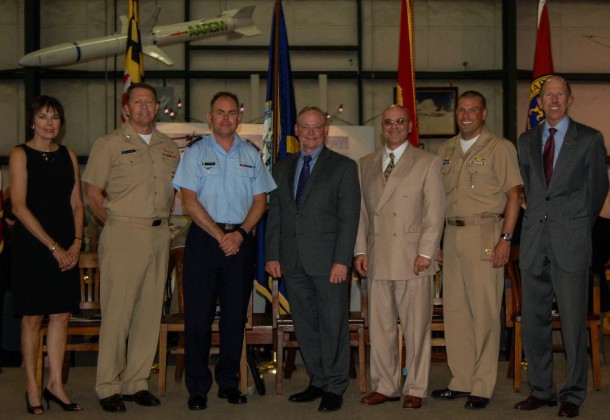Military Sales – Not So Easy

Selling American-made military hardware and services to foreign buyers is complicated. Very, very complicated.
The Patuxent River Squadron of the Association of Naval Aviation (ANA) team and The Patuxent Partnership (TPP) took on the topic of foreign military sales earlier this month at the Patuxent River Naval Air Museum, marking their 25th TPP/ANA forum.
Vice Admiral Joseph Rixey, Director of the Defense Security Cooperation Agency (DSCA) opened the panel with an analogy of foreign military sales (FMS) to a board game.
VADM Rixey half-joked and metaphorically explained the number of variables within the program. A nation is approved to purchase the complicated technology and future maintenance promises offered by the United States based on many variables, including the buyer nation’s human rights record and its ability to maintain the purchase in the future.
DSCA is the Department of Defense (DoD) lead agency for the execution of security cooperation programs. The largest of these is the FMS program which is the primary means by which the U.S. government sells defense articles, services and training to partner nations.
VADM Rixey has led DSCA since September 2013, during which time he reorganized the agency by region, rather than function, to better understand and execute the full range of security cooperation solutions.
There are 140 requests per month to purchase American military products and services and 13,000 open cases, a value of $484 billion. In 2015, the four military services sold $40 billion to foreign military partners.
FMS sales benefit the U.S. as well as the purchasing nation. Panelist Wing Commander (WGCDR) Anthony Page, Australian director of FMS described how a nation the size of his cannot put forth the amount of effort into development that the U.S. does. Its allied position with the U.S. allows it to wield a world-class military. And in Australia, he notes, it is different than talking about the Pacific Pivot from America. “We live there,” he said.
Australia has also supported Western efforts in the Middle East. “So we are a target too,” WGCDR Page said.
“We’re buying from a trusted supplier, always on time, under budget,” WGCDR Page explained. And while that provoked a few chuckles, the panel concurred that the US delivers what it promises and continues to provide maintenance around the world for products that are no longer operational for U.S. armed forces.
NAVAIR is a significant player in the process, explained Gary Kurtz, Senior Executive Service (SES), NAVAIR’s assistant commander for acquisition. “NAVAIR is the intersection of policy and acquisition; this is where the order is turned into product,” Mr. Kurtz said.
“Foreign Military Sales and cooperative programs are a significant part of our business,” he said. There are more than 1,000 active FMS cases open now. It is this scope of activity that pushes $32 billion in sales through NAVAIR.
Since taking the reins in June, Mr. Kurtz has already seen $4 billion in new FMS cases opened and asserts fiscal year 2016 looks promising for FMS as well. The even greater value is to be able to work alongside an ally, and your equipment is inter-operable.
“It is all built on trust. We deliver on time and at cost. Our customers believe in us. They believe in our products,” Mr. Kurtz said.
Stephen Bowdren, SES, Director of Technology Security and Cooperative Programs, Navy International Programs Office (NIPO) said the growing emphasis on security has a direct impact on foreign sales.
There are hundreds of military to military international programs. There is competition between countries and between coalitions. There are considerations of whose staff will be working on what and the tracking of weapons transfers.
The challenge is to get ahead of the request and build to our national needs, Mr. Bowdren said, but also to include export considerations.
The panelists concurred that the Navy’s FMS will continue to grow.
The demand is not going to shrink, said Capt. Craig Grubb, program manager for H-60 Multi-Mission Helicopter (PMA-299). Eighty percent of the world’s population lives at or near the shore of a planet that is 70 percent water. “There are a lot of maritime security needs out there.”






















